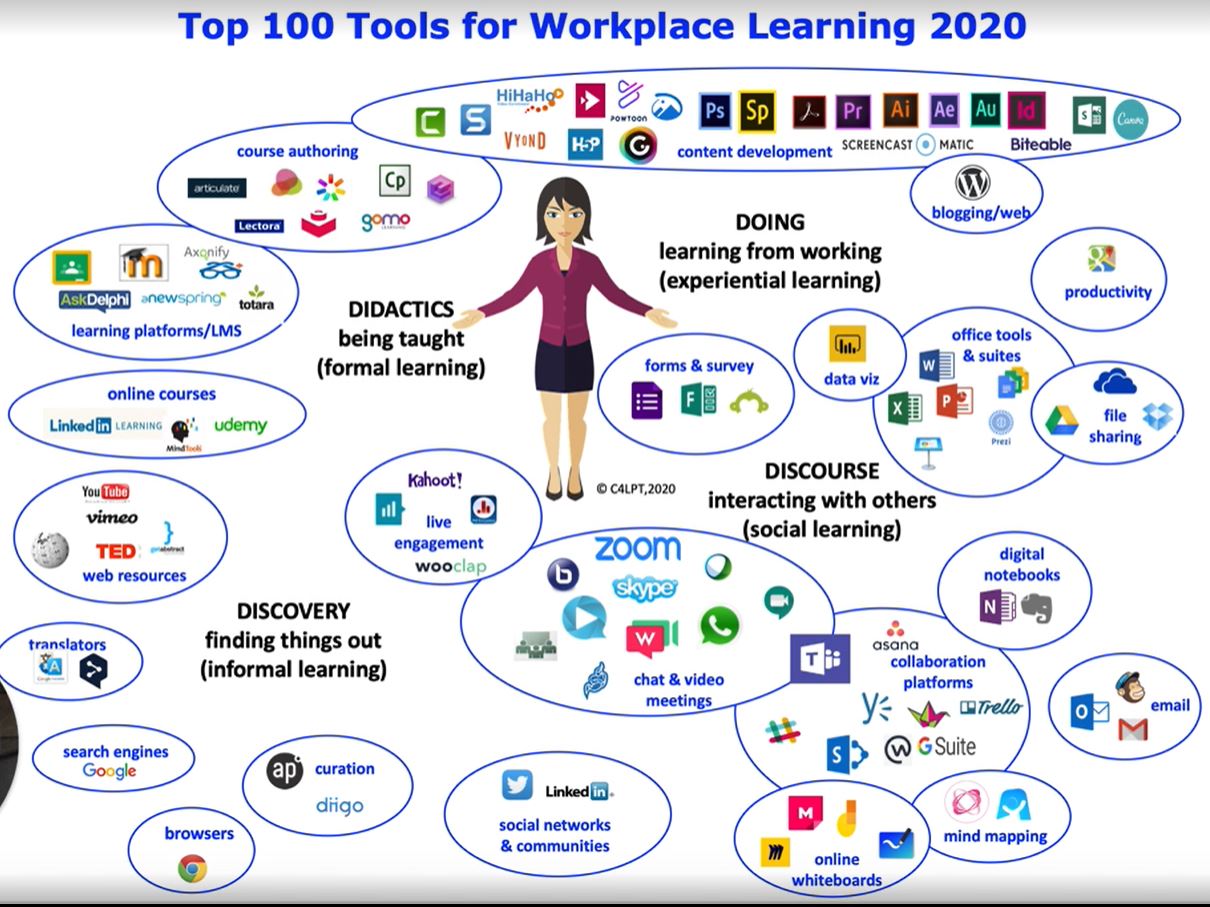
Redefining the workplace as a new area of impact
Impuls Series - The Future of Workplace Learning
Part 4 with Marina Begic: Digital Business Development Expert and Senior L&D Consultant
Fast and targeted learning, especially for leaders, is becoming increasingly important in an intensifying digital and agile world. Therefore, Marina shares her personal learnings with us. We kicked the series off with these topics:
- The Future of Workplace Learning – Digitization Boost
- personnel developers as trusted guides
- self-directed learning needs more than just an LMS!
Hey, Marina is a member of our LinkedIn expert group
Redefining the workplace as a new area of impact
The call for more flexibility in combination with home office and digital collaboration is giving rise to new forms of organisation. New technologies and digitalisation are leading to new forms of work and employment that are detached from space and time and also require the redesign of physical workplaces.
Just as learning technologies and processes will be built around employees as users, the office will also be built around users in the future.
In the future, we will mainly enter office spaces for two reasons:
- Due to psychosocial needs, i.e. to exchange informally with colleagues and not to be alone
- Because of the technical assistance systems, not primarily to work there. What used to be the printer, which was absolutely necessary for getting work done, will be the holodeck in the future. Holodecks are rooms that create simulations and virtual worlds by means of holographic projection. We may not be able to create rooms like those in Star Trek in the near future – but VR and MR technologies already provide the necessary technology to create immersive learning experiences.
Arguments for face-to-face training
A still unbeatable argument for face-to-face training so far is the possibility to leave the workplace, the mobile phone and the laptop stay off, so that one can really concentrate on the new topic.
Another argument for leaving the workplace when learning is that there are too many distractions when learning virtually at the workplace. It is simply too tempting to check one’s e-mails and work through one or two things “on the side”.
In addition, leaders tend to schedule their employees for appointments immediately before or after the training.

The office of the future
The office of the future supports its users in their current needs. And these are no longer open-plan offices for working together, because we have learned that we can also work well virtually.
So in the future, when reorganising office space, not only meeting and communication rooms should be considered, but also theme rooms, rooms for experimenting and learning in equal measure.
Functional feel-good ambience has been proven to increase performance. In future, the office must support human performance by offering a promise of learning and achievement.
In-depth literature | personal recommendation:
Personal Magazine plus:
Arbeitswelten (working worlds)
The Human Factor@work. Industrieverband Büro und Arbeitswelt e.V. (IBA)

Marina Begic
Digital Business Development Expertin und Senior L&D Consultant
Marina has been working on new, effective learning methods and the future of corporate learning for over 15 years. In her current role, she is responsible for Digital Business Development at MDI, where her focus is not driven by the current buzzwords, but primarily on the feasibility of digital transformation for clients such as Erste Group, Lenzing, Semperit, Deutsche Bahn, Andritz AG, Uniqa, Mayr-Melnhof, Frequentis, RHIM. Her greatest strength is bringing loose ends together, which she impressively demonstrates time and time again with her big picture view and multi-dimensional approach. Her greatest passion is to provide learners not only with an experience, but also with real, lasting value for their real challenges.
Digital training formats for leadership development
We help make leadership development more agile with our digital training formats:
- E-learnings
- e-consulting
- Blended Learning Journeys
- Virtual Leadership
- virtual reality
- digital learning transfer
– we have just the right thing for your needs!




















